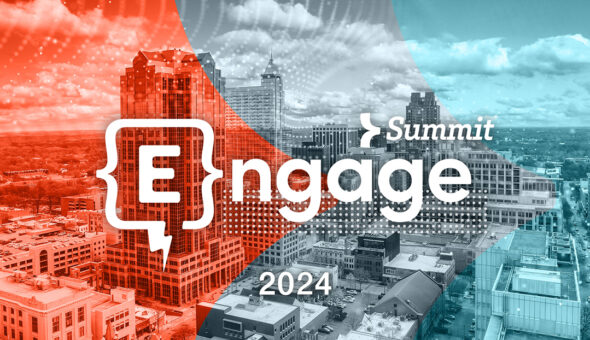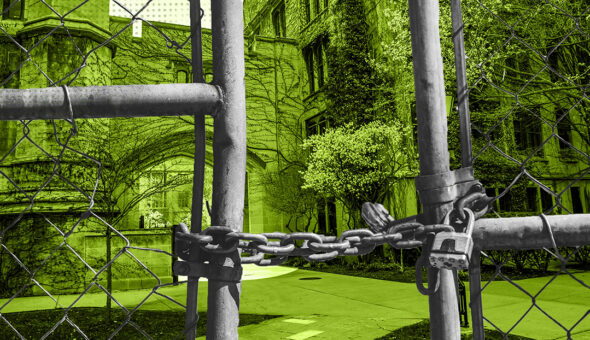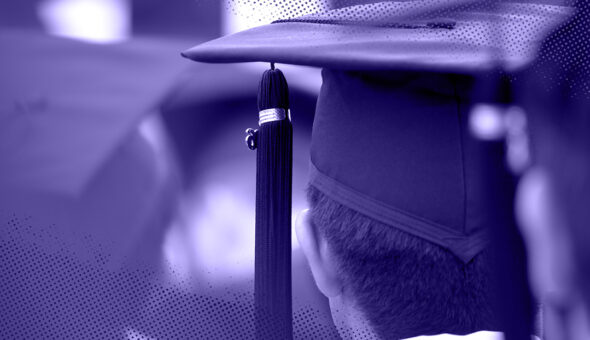In the classic debate over a branded house or a house of brands, each side has gotten it right, yet each side has gotten it fundamentally wrong.
“This is a power struggle. It’s a trust situation, where schools had a bad experience, or they haven’t been supported,” said Susan T. Evans, a consultant based in Williamsburg, Virginia who specializes in website redesigns in the higher ed space. “If your hands are tied to a system that doesn’t provide what your students or prospective students need or expect, you’re only going to put up with that for a short amount of time.”
Evans, whose clientele has included Johns Hopkins University, Saint Louis University, Carleton College, and William & Mary, said she sees many institutions in recent years bringing these disparate viewpoints into closer alignment.
Perhaps ironically, one of the most important strategies for resolving the age-old clash afflicting MarComm relations boils down one thing: communication.
“It’s really important to bring everyone to the table,” said Megan Gonzalez, executive director of institutional communications at the University of West Florida.
Siloed marketing is almost inevitable, Gonzalez said, if the central office fails to bring everyone into the conversation.
“They should be in the know and feel like they’re part of the organization,” Gonzalez said.
Equally important is making sure that all players understand what, specifically, the central office aims to accomplish with a brand message, said Jenny Brower, president and COO of Mindpower, an Atlanta-based brand strategy and marketing agency whose clients have included Michigan Tech, Indiana State University and the University of Saint Thomas.
“The central office needs to be clear about why a message matters, what it’s doing, who it serves and how it serves them,” Brower said. “A clear vision leads to a clear message that every unit of the institution can leverage.”
If you want individual schools to buy into a central message, try giving them a role in shaping it, said Francesca Reynolds, director of marketing at Temple University. That approach has worked at Temple, where the central office tapped representatives from several schools to provide feedback on branding projects that are in progress.
“We present things that aren’t completely finished and ask the schools and colleges to comment and poke holes,” Reynolds said. “We’re delivering playbooks and guidelines they can easily use and adapt. That’s been a huge culture shift for us in the last three years.”
Temple has hired a marketing manager who serves as a liaison to ensure that the embedded offices develop assets that serve the individual schools’ goals while resonating with the institutional identity.
“It’s to bring folks out of the colleges and to think ‘Big Temple’ and how each of the schools and colleges can really support each other,” Reynolds said.
The process has helped, said Colleen Treml, assistant dean of strategic communications at Temple’s Beasley School of Law.
“Our marketing manager has brought a greater definition to the strategic portion of what we produce at the law school to make sure we’re in step with what the university wants us and needs us to do to be good brand stewards, while serving the law school’s needs,” Treml said.
Dollars and data have influence. Use them.
Even where school-based marketers don’t aspire to be good institutional brand stewards, central offices can still win influence.
For starters, they can empathize with the stresses that schools face amidst an increasingly frenzied competition for shrinking numbers of students—and recognize that this provides an opening.
The limits on schools’ marketing funds give central offices a valuable role as free consultants, said Jeff Fowler, vice president of marketing and communications at Saint Louis University.
“The deans feel a pressure and a need to do whatever they can to enroll students in their programs. We get that and we want to help them,” Fowler said. “‘How can we help you get the most bang for your buck?’”
A school-based marketer planning to pay for a billboard ad may not realize how much further his dollars would go in digital and social spaces, Fowler noted, adding that a central team can help with tactics like geotargeting, geofencing and analytics that reap invaluable information.
“Data is so important right now,” Fowler said. “The measurement part is as important as the creative and the placement.”
Providing resources helps ensure that communications are active and responsive to the needs of schools.
At Temple, the central office provides market research that would exceed individual schools’ budgets, while at Saint Louis University, centralized ad buying has achieved efficiencies.
If nothing else, Brower said, budget strains should spur recalcitrant schools to sing from a common hymnal.
“Otherwise, you’re doing all the heavy lifting on your own,” Brower said. “It’s such an inefficient way to market an institution. It’s completely disjointed, and there’s lost power.”
And, it turns out, words matter, too. When Gabriel Welsch took over as vice president of marketing and communications at Duquesne University in March 2019, he inherited what was widely perceived as a “broken” system. Among the changes Welsch made was replacing the central office’s “customer service” model with one that treats school-based marketers as “colleagues.”
“The expectation is that we’re professionals engaging with other professionals towards a university goal,” Welsch said, noting that he has also worked to make the central office more responsive to school requests that once seemed to get lost in “a black box” and to meet more regularly with embedded teams.
It’s easier to say “no” to a colleague who goes off the branding reservation than it is to a client, Welsch observed, adding that marketers at Duquesne had to overcome a perceived dissonance.
“They were used to being treated like clients,” Welsch said, “As colleagues, we’re all bringing our expertise to the table.”
Yet collegial relations require both give and take.
At West Florida University, when school-based marketers accustomed to using every color in the Crayola box chafed against the institution’s narrow palette, Gonzalez said it made sense to bend.
The central office provided an accent palette, along with specific guidelines for where and how much the secondary colors could be used.
When a school puts its own idiosyncratic spin on central-office sanctioned messaging, Brower said, it may be unwise to interfere.
“We’ve seen something where an individual school does something great and it speaks to the institution,” Brower said. “It ended up inspiring others. It’s about what’s good for the greater whole.”
At the end of the day, two principles should guide both groups. First, central and school-based MarComm offices desperately need each other. In the overwhelming majority of cases, a school benefits greatly from the name recognition, amenities and overall reputation that a larger institution confers. But a centralized office will never be nimble enough to keep up with the constant changes that drive the flow of tuition dollars toward individual schools and programs.
Lastly, everybody works for the same employer. Remember to dance with the one who brought you.










